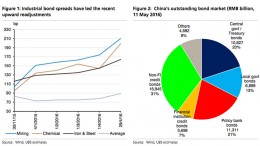Spain Debt/GDP Ratio Still Falling Thanks To Intensity Of Credit Cycle
If we accept that the evolution of debt is a relevant factor in the explanation of the economic cycle, with the usual affirmation that the increase in debt explains the evolution in GDP, with a certain lag, then the credit cycle in Spain has been particularly intense.





